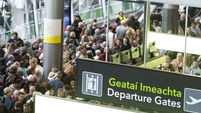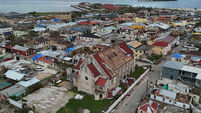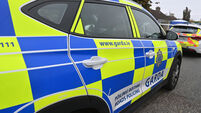Aviation watchdog rules out legal case against firm that flew drones within Dublin Airport's airspace

Civil engineering firm Wills Bros was found to have employed three separate drone pilots for flights within the airport’s ‘red’ zone, less than two kilometres from its perimeters. File photo: Niall Carson/PA
Ireland’s aviation regulator says it will continue to engage with a company found to have operated drones within Dublin Airport’s airspace in violation of EU regulations, but has ruled out legal action or applying sanctions for now.
Civil engineering firm Wills Bros was found to have employed three separate drone pilots for flights within the airport’s ‘red’ zone, less than two kilometres from its perimeters.
Those flights were taken as part of a construction project in Finglas, located just south of the airport’s runways. Wills Bros has previously said that it uses drones for ‘surveys, imageries, progress monitoring and project management’ for its business.
It is unclear why the drone flights in question were carried out. The company did not immediately respond to a request for comment.
All three of the drone pilots were found to have been operating without either an operational authorisation or an official drone operator’s registration, the Irish Aviation Authority (IAA) said, adding that the flights were first detected by the airport’s Dedrone detection system.
“In line with the IAA’s safety and enforcement policy, the IAA engaged directly with Wills Bros to achieve early compliance rather than pursue legal avenues,” a spokesperson for the authority said.
They said the three pilots have since “completed the appropriate training” while Wills Bros itself “has implemented internal procedures to ensure all future (drone) operations are conducted under proper authorisation and oversight”.
Anyone operating a drone weighing more than 250 grams in Ireland has to register with the IAA, while extra training is required for anyone flying a drone weighing in excess of 4kgs.
Pilots are forbidden from flying a drone in a manner which could cause a hazard to another aircraft, or near a functioning aerodrome and its traffic.
Enda Walsh, manager within the IAA’s drone section, said the case “highlights the effectiveness of detection systems, but more importantly, it demonstrates what positive regulatory engagement can achieve”.
He said Wills Bros had “responded proactively, took full responsibility, and worked closely with our team to bring their operations into full compliance” and now stands as a “model example” of how the construction sector can use drone technology.
Read More













